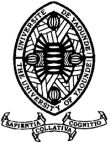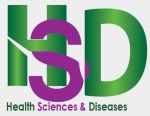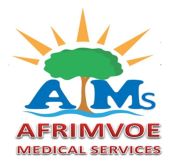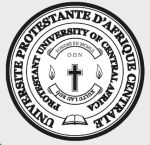Adult Ebstein's disease: A Case Report
Maladie d’Ebstein chez l’Adulte : À Propos d’un Cas
DOI:
https://doi.org/10.5281/hra.v3i1.6291Keywords:
Ebstein's anomaly, congenital heart disease, adult, MaliAbstract
RÉSUMÉ
La fréquence de la maladie d’Ebstein représente environ 1% de toutes les cardiopathies congénitales. Dans la plupart des cas, on ne retrouve pas de facteur causal. L’exposition au lithium durant le premier trimestre de la grossesse est un facteur de risque classique, il en est de même pour l’exposition aux benzodiazépines. Le patient présente une histoire naturelle extrêmement variable en fonction du degré de sévérité de l’anomalie. Il existe des formes symptomatiques dès l’âge fœtal et des formes à découverte tardive chez le patient âgé. La première description autopsique de cette pathologie remonte à l’année 1866 par Wilhelm Ebstein. Nous rapportons le cas d’un patient de 37 ans venu consulter pour palpitations. L’auscultation cardiaque a retrouvé une tachycardie, un dédoublement du B1 et un souffle systolique d’insuffisance tricuspide. L’ECG a noté une tachycardie régulière et un espace PR court. La Radiographie thoracique a objectivé une cardiomégalie. Les signes échocardiographiques étaient le déplacement apical de l’insertion du feuillet septal de la valve tricuspide au-delà de 8 mm/m2 de surface corporelle révélant la maladie d’Ebstein. Il n’y avait pas de communication auriculaire ou ventriculaire associée. Le malade avait été mis sous traitement bétabloquant (bisoprolol à faible dose de 1,25 mg), un antagoniste des récepteurs de l’angiotensine II (candésartan à 4 mg), aspégic 100 mg, ésomeprazole 40 mg et régime mi sodé. Le patient est décédé un mois plus tard dans un hôpital de la place suite à des complications de sa maladie.
ABSTRACT
Ebstein's disease occurs in approximately 1% of all congenital heart diseases. In most cases, no causal factor has been identified. Exposure to lithium during the first trimester of pregnancy is a classic risk factor, as is exposure to benzodiazepines. The patient's natural history is extremely variable, depending on the severity of the anomaly. There are forms that are symptomatic from foetal age and forms that are discovered late in life in elderly patients. The first autopsy description of this condition dates back to 1866 by Wilhelm Ebstein. We report the case of a 37-year-old patient who came to us with palpitations. Cardiac auscultation revealed tachycardia, a splitting of the B1 and a systolic murmur of tricuspid insufficiency. The ECG showed regular tachycardia and a short PR space. Chest X-ray showed cardiomegaly. The echocardiographic signs were apical displacement of the insertion of the septal leaflet of the tricuspid valve in excess of 8 mm/m2 of body surface area, revealing Ebstein's disease. There were no associated atrial or ventricular septal defects. The patient was treated with a beta-blocker (low-dose bisoprolol 1.25 mg), an angiotensin II receptor antagonist (candesartan 4 mg), aspegic 100 mg, esomeprazole 40 mg and a low-sodium diet. The patient died a month later in a local hospital following complications of his illness.
References
Fuchs MM., Conrolly HM., Ebstein Anomaly in the Adult Patient Cardiol Clin. 2020 Aug; 38 (3) : 353-363.doi : 10.1016/j.ccl.
Baumgartner H., De Backer J., Babu-Narayan SV., et al. 2020 ESC guidelines for the Management of Adult Congenital Heart Disease : The Task Force for the Management of Adult Congenital Heart Disease of the European Society of Cardiology (ESC). Eur Heart J, 2021, 42 : 563-645.
Dearani JA., Mora BN., Nelson TJ., et al. Ebstein anomaly review : what’s now, what’s next ? Expert Rev Cardiovasc Ther, 2015, 13 : 1101-1109.
Stout KK., Daniels CJ., Aboulhosn JA. et al. 2018 AHA/ACC guideline for the management of adults with congenital heart disease. Circulation 2019, 139 : e637-e697.
Batisse A, Fermont L., Levy M., doin Cardiol Pédiat Pratique Anomalie d’Ebstein, 4èédition 2013 p92.93.94.95.
Cohen A., Montalescot G., Cardiol., Anomalie d’Ebstein, 3è édition tome 1 ; 2021 ; 1391.1392.1393.1400.
Bourzeg K. et al., Une maladie d’Ebstein asyptomatique découverte à l’occasion d’une douleur thoracique atypique, PAMJ - 43(118). 01 Nov 2022.
Garba M. et al., Quel pronostic pour l’anomalie d’Ebstein sans la chirurgie ? La Tunisie Médicale - 2016 ; vol. 94 (4).
Konde CA. et al., Maladie d’Ebstein à propos d’un cas, Ann. Afr. Med., vol. 14, n°3, Juin 2021.
Hadraoui HE. Et al., Maladie d’Ebstein révélée par une anasarque fœto-placentaire, Pan African Medical Journal. 2016 ; 24:279 doi:10.11604/pamj.2016.24.279.9970.
Downloads
Published
How to Cite
Issue
Section
License
Copyright (c) 2024 Samaké S, Dakouo MR, Kodio A, Sangaré A, Dembelé B, Sogodogo A, Koné K, Sidibé N, Ba HO

This work is licensed under a Creative Commons Attribution-NonCommercial-NoDerivatives 4.0 International License.
Authors who publish with this journal agree to the following terms:
- Authors retain copyright and grant the journal right of first publication with the work simultaneously licensed under a Creative Commons Attribution License CC BY-NC-ND 4.0 that allows others to share the work with an acknowledgement of the work's authorship and initial publication in this journal.
- Authors are able to enter into separate, additional contractual arrangements for the non-exclusive distribution of the journal's published version of the work (e.g., post it to an institutional repository or publish it in a book), with an acknowledgement of its initial publication in this journal.
- Authors are permitted and encouraged to post their work online (e.g., in institutional repositories or on their website) prior to and during the submission process, as it can lead to productive exchanges, as well as earlier and greater citation of published work










